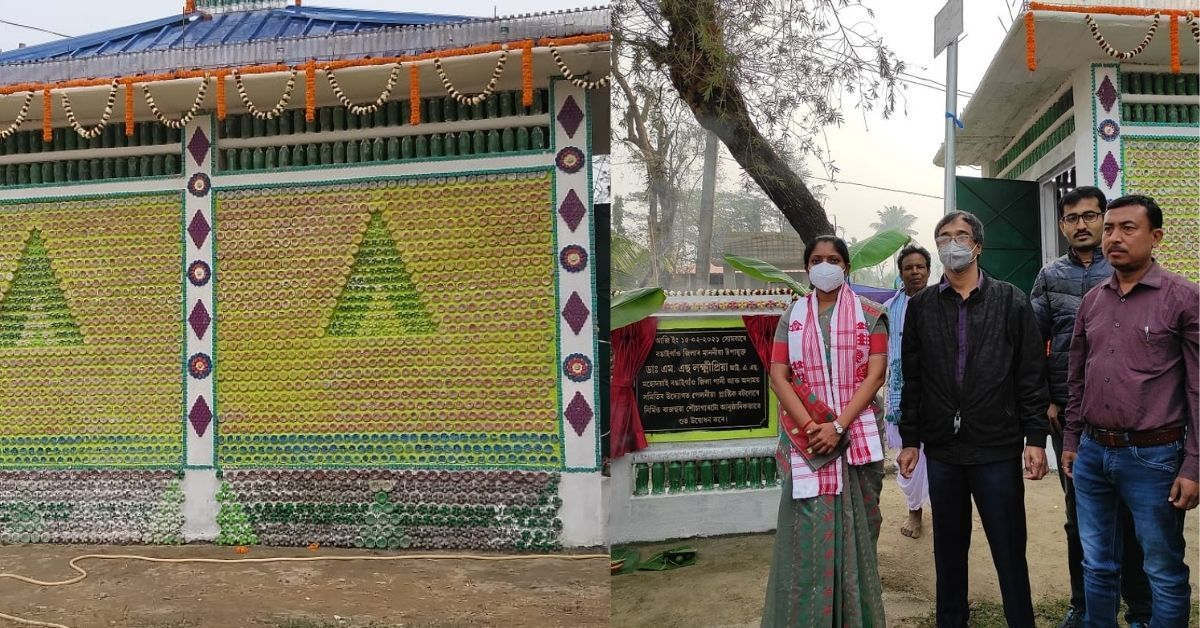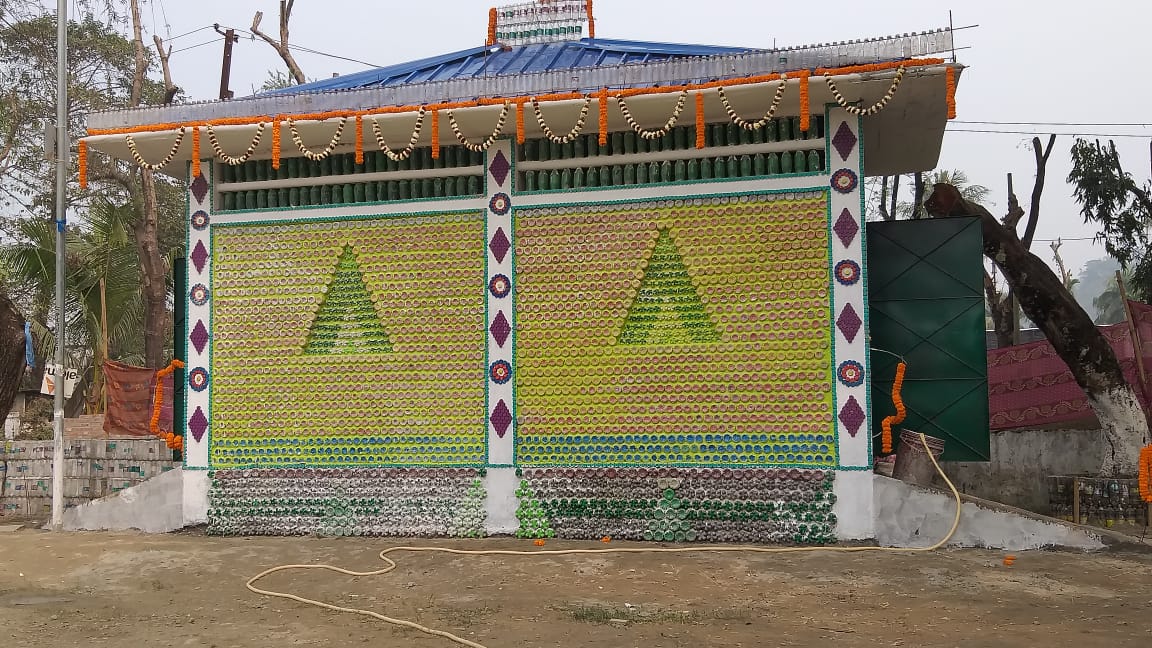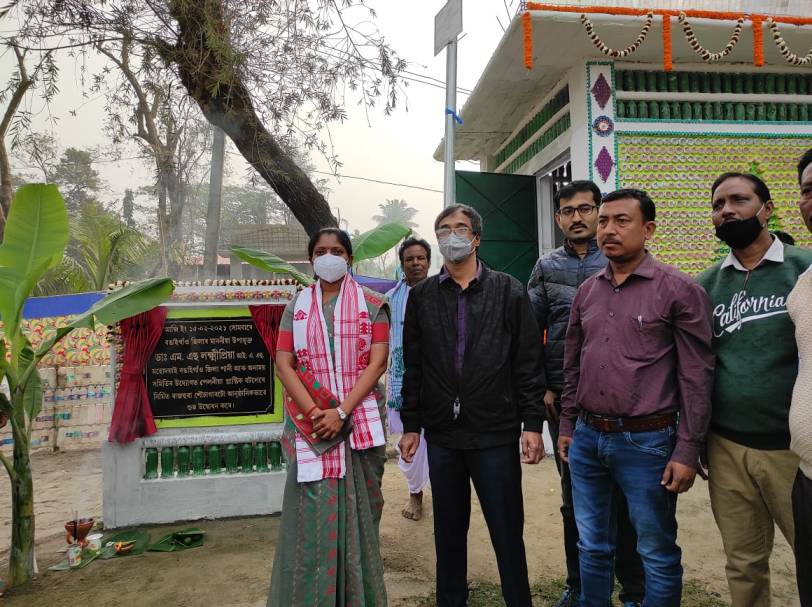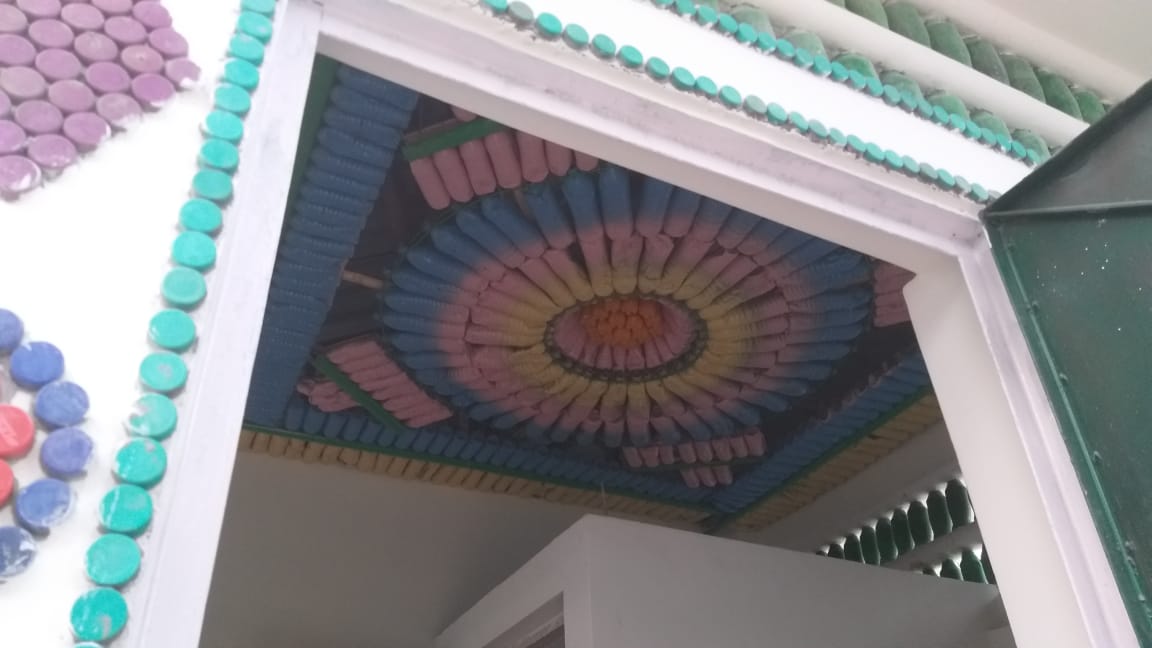Toilet Made of 8000 Plastic Bottles in Assam. IAS Officer Shares How You Can Build One
IAS officer Lakshmi Priya M S in Assam details how he built a community toilet made using more than 8000 plastic bottles.

In Assam’s Bongaigaon district, more than 8,000 discarded waste plastic bottles have been used to construct a toilet. Authorised by the Deputy Commissioner Lakshmi Priya M S, who is a 2014 batch IAS Officer, this project was carried out by Shantanu Sutradhar, Executive Engineer, Public Health Engineering Department (PHED).
Shantanu tells The Better India, “The process is not a tough one. We collect all the discarded plastic bottles and thoroughly clean them before we can use them. Each bottle is filled with sand, cement, putty, and mortar and once they harden, we use them as a substitute for the bricks. This needs to be done to ensure that the bottles are strong enough.” The frame of the building is made up of regular beams and columns. The entire wall and ceiling is out together with the discarded plastic bottles.
The toilet that is constructed is a 17 by 9 feet unit and there are two separate cubicles, for men and women.

The entire process took close to two months, and Shantanu says, “We did not want to rush the process and hence it took us close to two months. It can be done faster as well.” The toilet is also equipped with ramps and railings for the convenience of the elderly and differently abled.
The next toilet using these discarded plastic bottles is being planned at Abhayapuri in Assam following which Shantanu says that every block headquarters will have a toilet made from such discarded plastic bottles. Even though the exterior of the toilet is made of different materials, Shantanu says that in terms of the upkeep, it does not require any extra care or maintenance.
Deputy Commissioner IAS Dr Lakshmi Priya M S, who heralded this project says, “Decreasing carbon footprint within the district has been one of the initiatives that we have undertaken. To achieve this, we installed more than 1,500 solar street lights across the town and now we use much less of the electric light.” There are 25 wards in the Bongaigaon Municipality and waste segregation is taking place in all of them.
All the biodegradable waste is collected and converted into manure, while everything that can be recycled is being recycled.

“The need for clean public toilets coupled with a way to use the discarded plastic bottles was what led to the construction of the toilet,” she says. Bongaigaon is a premier town of lower Assam and is a prominent business, commercial, and industrial centre thus generating a considerable amount of plastic waste daily. Having cost approximately Rs 6.5 lakhs, Shantanu mentions that a minimum user fee will be levied to ensure that the toilet is well-maintained.
Here’s how you can do the same

- Collect 500 ml and 1 litre plastic bottles. These are to be cleaned well and the cap is kept aside.
- Each bottle is filled with putty or mortar to ensure that it hardens up. This process will take 24 hours and the bottles need to be kept aside during this time.
- Once hardened these bottles can be used just like bricks to make the wall, ceiling, and also the interior partitions.
- To make a room approximately 10 by 8 feet in size, you will require approximately 4,000 plastic bottles.
- This process will take anywhere between 1.5 to 2 months.
- The process of maintaining this type of building is the same as using any other material and does not require any extra care.
(Edited by Yoshita Rao)
If you found our stories insightful, informative, or even just enjoyable, we invite you to consider making a voluntary payment to support the work we do at The Better India. Your contribution helps us continue producing quality content that educates, inspires, and drives positive change.
Choose one of the payment options below for your contribution-
By paying for the stories you value, you directly contribute to sustaining our efforts focused on making a difference in the world. Together, let’s ensure that impactful stories continue to be told and shared, enriching lives and communities alike.
Thank you for your support. Here are some frequently asked questions you might find helpful to know why you are contributing?


This story made me
-
97
-
121
-
89
-
167











